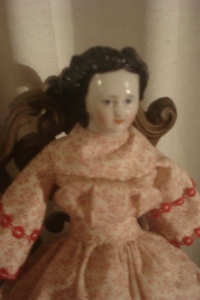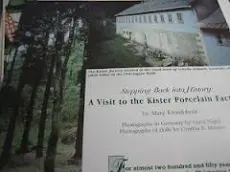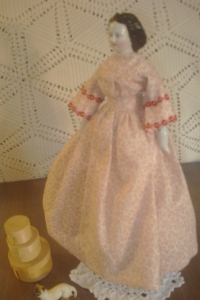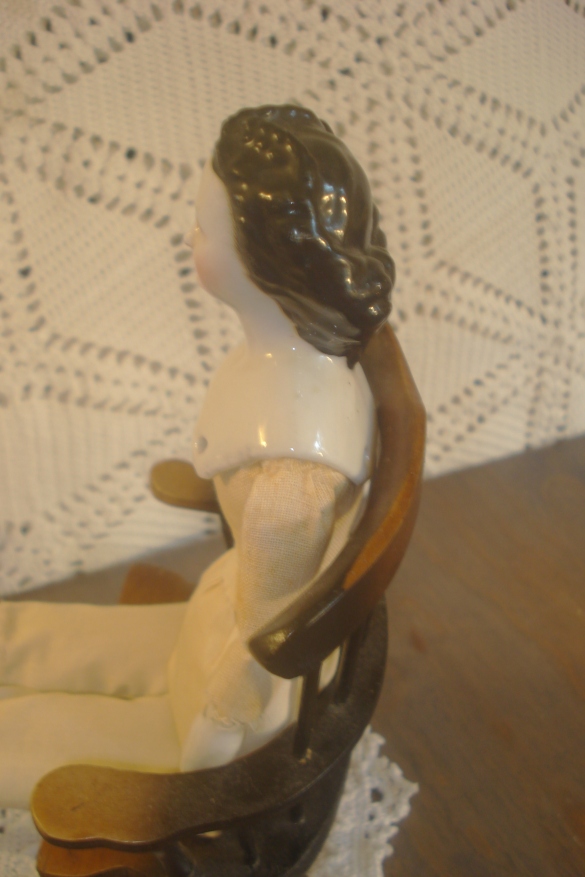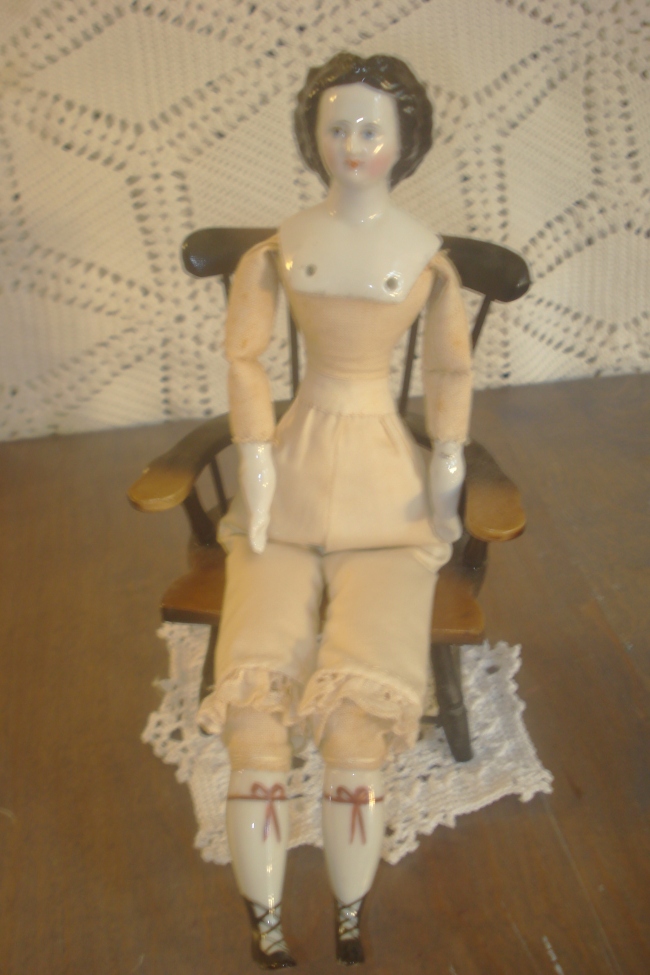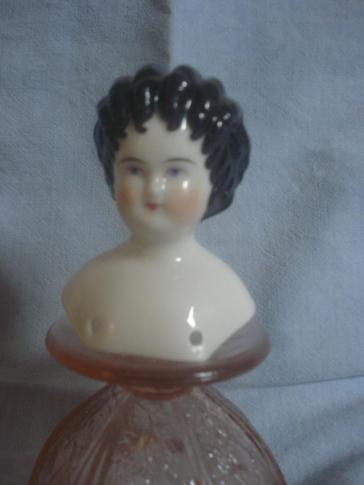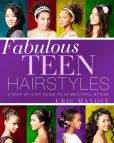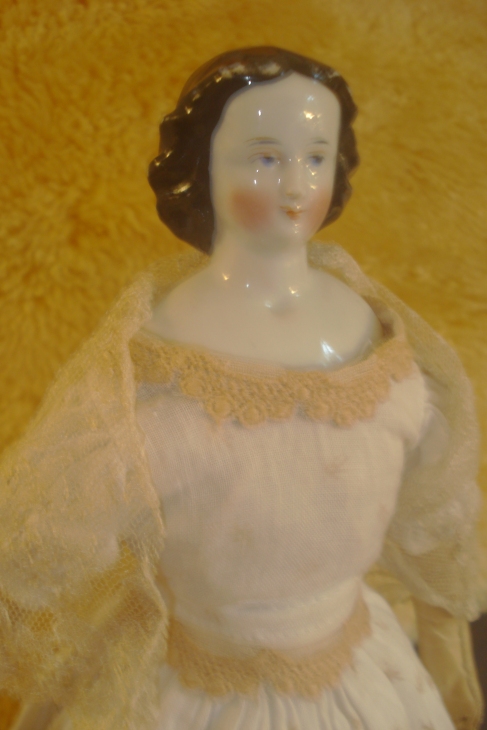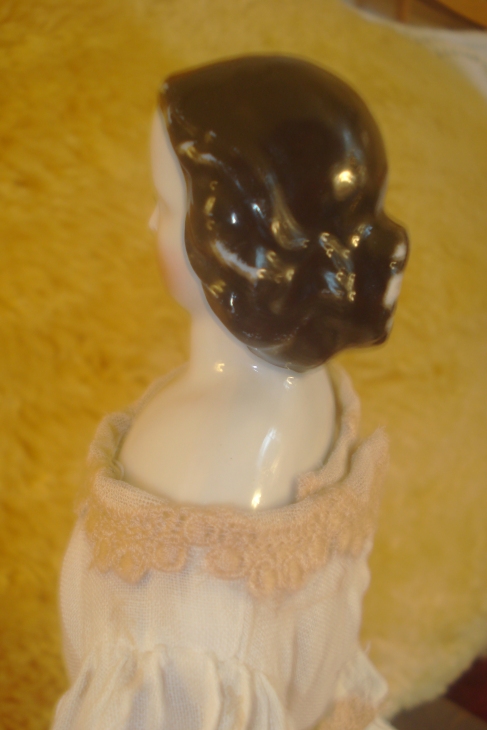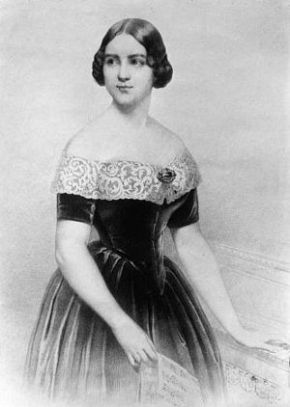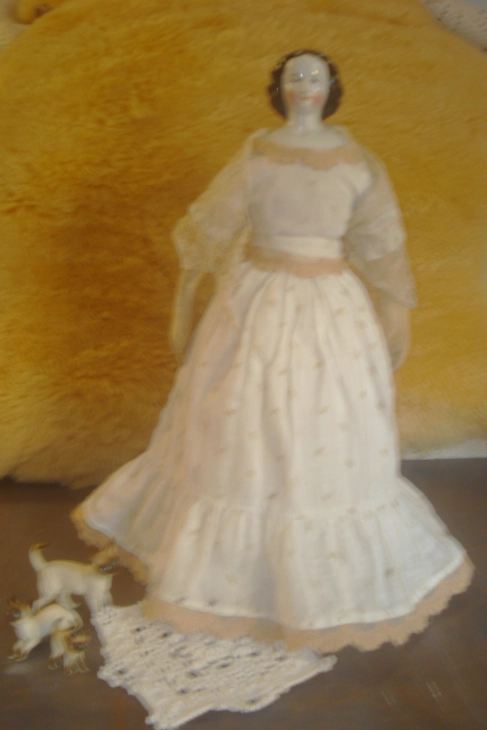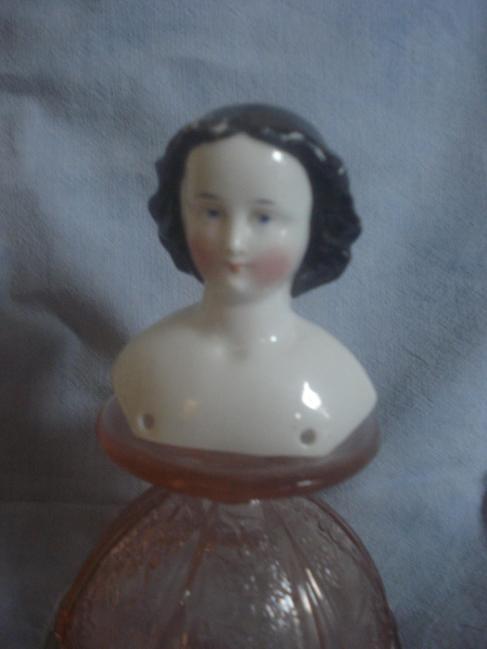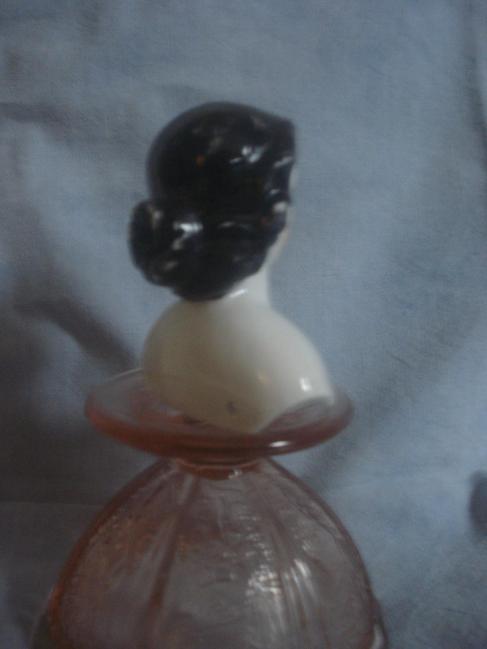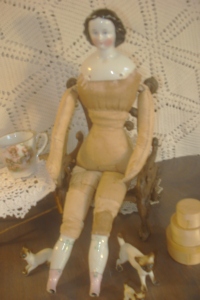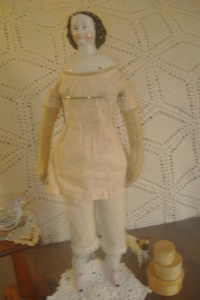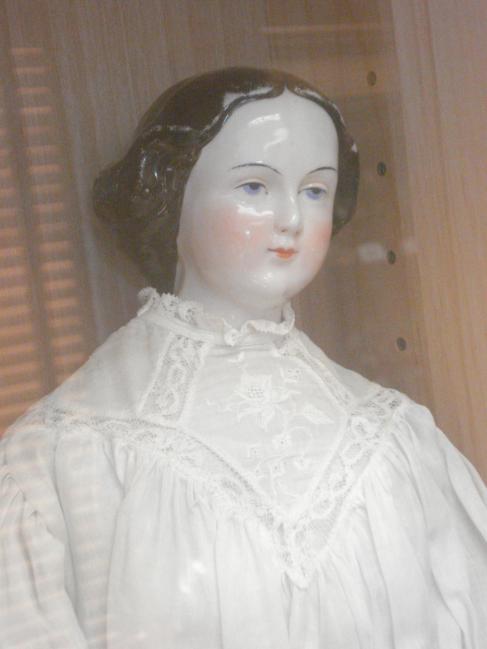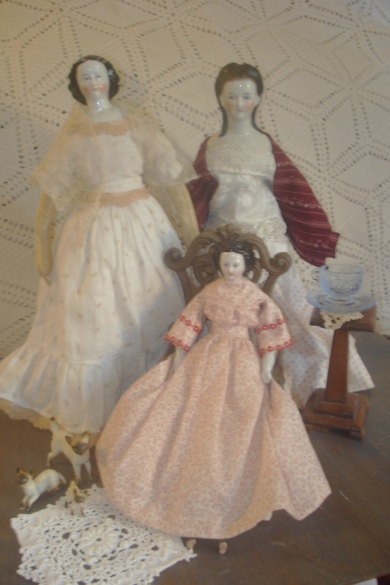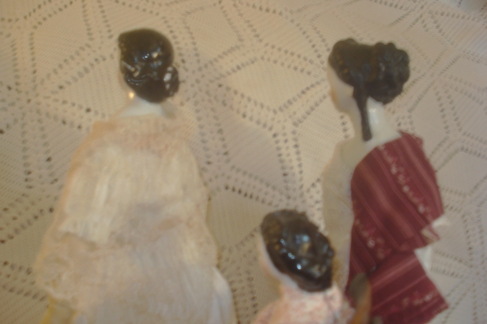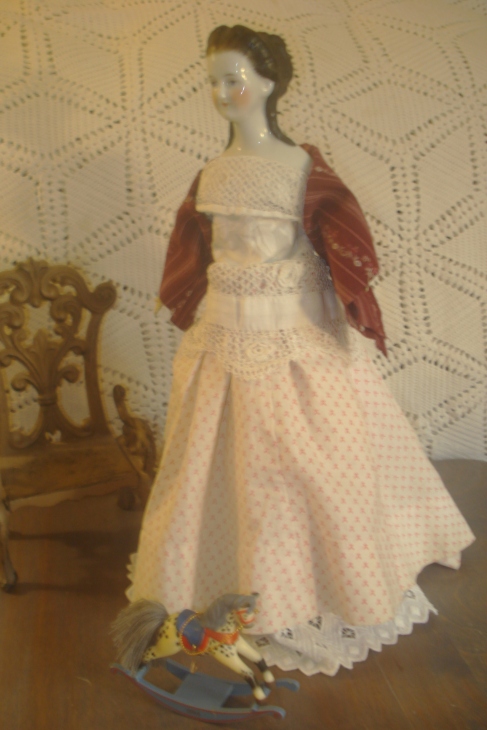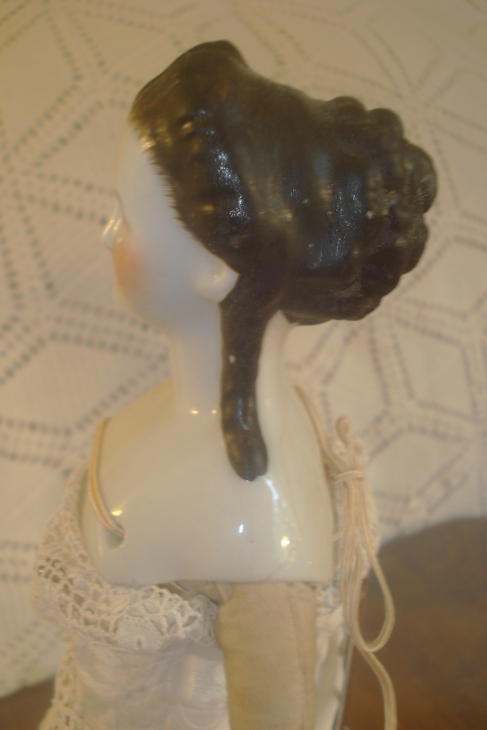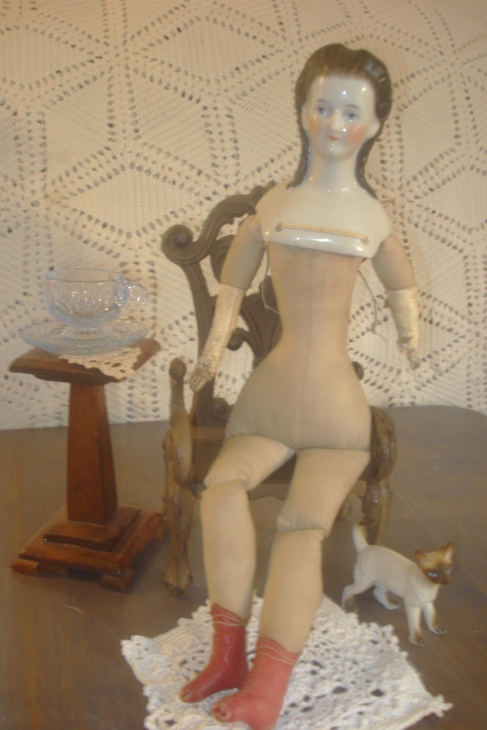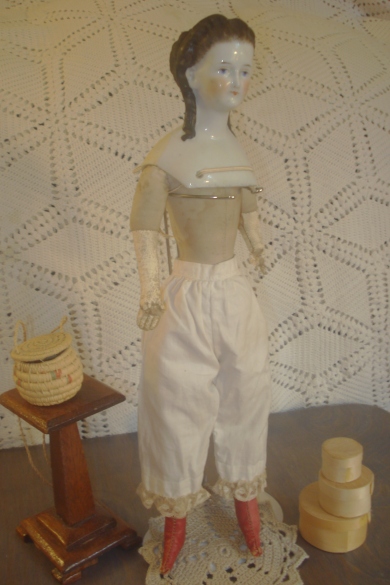Although the very early china dolls of the 1840’s from the high quality KPM Meissen and KPM Berlin factories were always marked, the early dolls from the Thuringian porcelain factories were not marked. In most cases, the factory origins of these dolls remained a mystery to collectors of antique china dolls until the 1990’s when Mary Krombholz began making her yearly trips to Germany to tour the vacant factory buildings (most of which are now torn down) and German doll museums. She collected doll shards from the factory grounds and compared them with dolls from known factories in German museum collections. Thanks to Mary Krombholz and her study of the dolls’ face painting, we now have a guide to place dolls into categories for their factory makers, and for their chronology.
Gretchen is the third china doll from my collection that I would like to show you in this study of the fancy hair dolls. She has two small braids at the top of her forehead that form a V and then become part of the soft rolls of hair on either side of her face. The hairstyle ends in a fall of three long curls low on the back of her neck. She also has brush strokes on each side of her face indicating individual hairs. This is a desirable feature, and a good trait for a small doll like this one.
I have never seen another doll with a hairstyle like Gretchen’s, not even in a book. She is a small doll with a 2 ½” shoulder head and overall height of 11”. Because she is small, her face painting is not very detailed, but even so, I think she is an A. W. Fr. Kister doll because she has the characteristic thin, almost straight eyebrows, and the long darker line between her lips with an elongated oval for her bottom lip. She is probably one of the 1870’s fancy hair dolls.
Gretchen’s clothing is replaced, with poly/cotton drawers and petticoat with newer eyelet lace. Her small print cotton dress is pretty, but as a fancy hair doll, an evening dress of silk would be better suited to her. Her china right arm has nice detail and seems to be original to her. Her left arm is a replacement, being one of the lower quality Hertwig arms with five fingers all in a row so right and left are interchangeable. Her china legs are the good quality dollhouse doll type with flat soled black laced slippers and burgundy garters with bows painted at her knees.
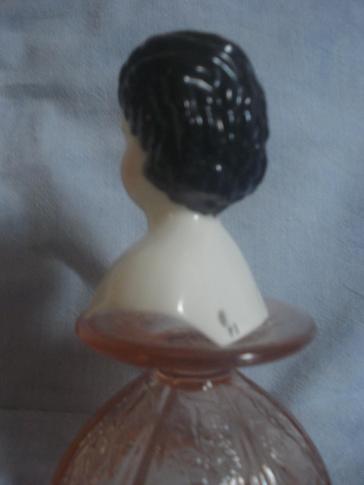
This style has vertical curls down the back of her head. You can see the “P S” initials on her shoulder plate.
The last fancy hair china shoulder head that I would like to show you in this study is Sadie. She is a reproduction of an Alt, Beck, and Gottschalk doll from the 1880’s named “Curly Top” by American collectors. The Curly Top style came in black, like this one, and a pretty light brown that is called “Café Au Lait.” Sadie does not have a body. She is a well made reproduction doll with the black initials “P S” under the glaze on the back of her shoulder plate. Though her face painting is well done, her mouth does not have the characteristic V in the middle, like true ABG dolls.
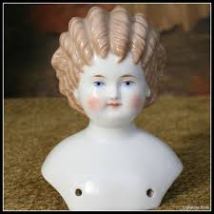
This is an antique ABG Curly Top shoulder head with Cafe Au Lait hair that was sold on Ruby Lane. Notice the distinctive V shaped lip line.
First created in the 1860’s and 1870’s, fancy hair china dolls are some of the most beautiful of the china dolls made. There is an astounding variety of styles made, and the styles can usually be documented as exact replicas of contemporary styles in women’s fashion magazines such as Godey’s Lady’s Book and Harper’s Bazar. Some fancy hair styles were made in the 1880’s along with the newly popular child dolls. Beautiful, and much sought after, the antique fancy hair dolls are also favorites for reproduction doll artists now.
Reference:
Krombholz, Mary Gorham. A Pictorial Reference Guide for German Chinas, 2009.
Post Script:
A word about the photos:
I take pride in a well written article with good photos. Many of the photos I have been posting of my dolls don’t live up to my expectations because they are not focused well enough. I blame this on the quality of my camera. My inexpensive Sony was purchased about five years ago with the expectation of using it for family snapshots. It works well enough for that purpose. However, now that I am photographing close-ups of dolls, the quality of my digital camera falls short. It is all I have to use for now, since I’m not willing to buy film for my really good Nikon 35 mm camera and scan the images. My apologies. JS
Post Post Script:
How is this for synchronicity? My daughter just brought me this book, that she checked out of the library, to look at. It is all about fancy hair styles for today’s young ladies! Take a look–you can even read part of it on BN.com. JS

